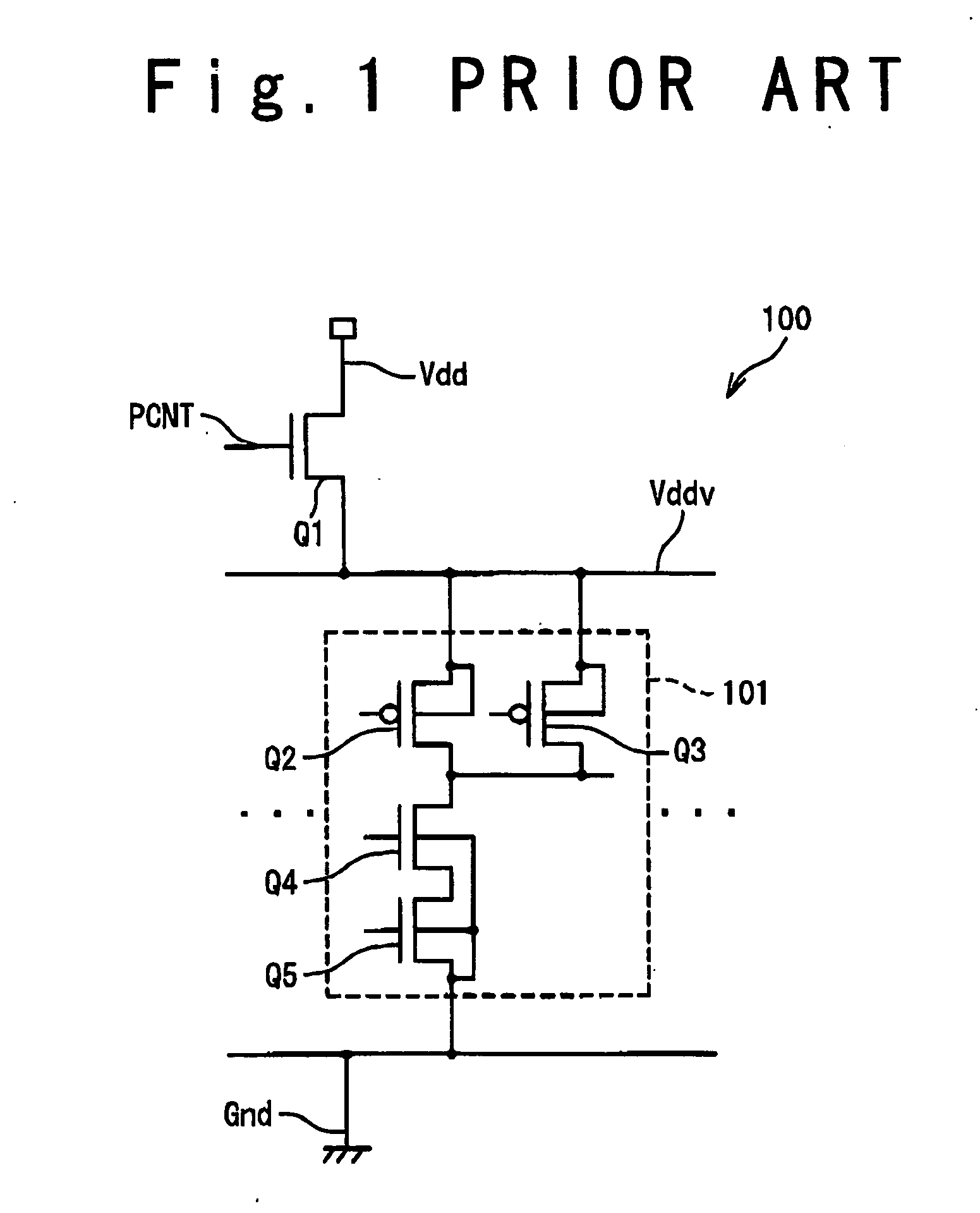Semiconductor integrated circuit for reducing leak current through MOS transistors
a technology of integrated circuits and mos transistors, which is applied in the direction of power consumption reduction, instruments, solid-state devices, etc., can solve the problems of increasing off-leak current, large percentage of total power consumption, and the proper sizing of sleep transistors requires a complicated circuit design process, so as to reduce rushing current and reduce rushing current.
- Summary
- Abstract
- Description
- Claims
- Application Information
AI Technical Summary
Benefits of technology
Problems solved by technology
Method used
Image
Examples
first embodiment
(First Embodiment)
[0035]FIG. 3 is a plan view illustrating an exemplary configuration of a semiconductor device in a first embodiment. The semiconductor device in this embodiment is provided with a macro region 1 in which function cells 8 are arranged in rows and columns. The function cells 8 each incorporate a logic circuit. The macro region 1 is fed with power supply to operate the function cells 8.
[0036] The macro region 1 includes a power control region 2. The semiconductor device in this embodiment is designed so that the power supply to the power control region 2 is suspended to reduce power consumption, when the semiconductor device is placed into the standby mode. In the design procedure, the power control region 2 is defined in the floor planning. The power control region 2 includes a plurality of switch cells 7 each incorporating a switch transistor or sleep transistor. Details of the structure of the switch cells 7 will be described later.
[0037] The semiconductor device...
second embodiment
(Second Embodiment)
[0063] A description is made of a second embodiment of the present invention, with reference to FIGS. 10 to 16. It should be noted that the same numerals denote the same elements in the attached figures.
[0064]FIG. 14 is a plan view illustrating an exemplary structure of a semiconductor device in a second embodiment of the present invention. The structure of the semiconductor device in the second embodiment is almost similar to that in the second embodiment. The switch cells 7 and the function cells 8 are provided in the power control region 2, within the macro region 1.
[0065] one difference is that the first power supply lines 4 are distributed over the whole of the macro region 1, including the power control region 2 in the second embodiment; the first power supply lines 4 are positioned to overlap the power control region 2. The first power supply lines 4 and the ground lines 5 are arranged in parallel at constant intervals, and the second power supply lines 6...
PUM
 Login to View More
Login to View More Abstract
Description
Claims
Application Information
 Login to View More
Login to View More - R&D
- Intellectual Property
- Life Sciences
- Materials
- Tech Scout
- Unparalleled Data Quality
- Higher Quality Content
- 60% Fewer Hallucinations
Browse by: Latest US Patents, China's latest patents, Technical Efficacy Thesaurus, Application Domain, Technology Topic, Popular Technical Reports.
© 2025 PatSnap. All rights reserved.Legal|Privacy policy|Modern Slavery Act Transparency Statement|Sitemap|About US| Contact US: help@patsnap.com



